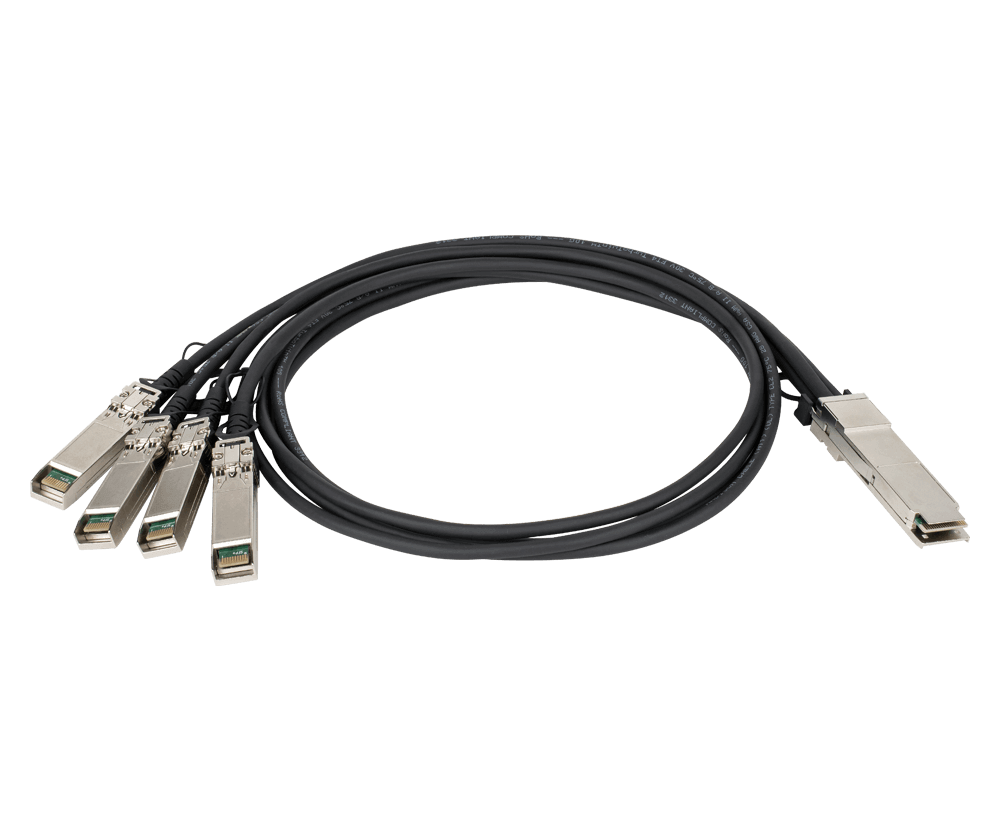Description:
The 40G Passive QSFP+ Twinaxial Direct Attach Cable is a high
performance, high bandwidth and cost-effective connection solution that
supports 40G Gigabit Ethernet. The 40G Passive QSFP+ Twinaxial Direct
Attach Cable is designed to support high-density connections for
switches with 40G interface, much faster than SFP+. There are three
cable models, including the DEM-CB100QXS (one meter) and the
DEM-CB300QXS (three meter). The DEM-CB100QXS-4XS QSFP+ to 4X SFP+
one-meter cable features a QSFP+ connector on one end, and four SFP+
connectors on the other end, allowing it to connect to up to four 10G
servers. The 40G Passive QSFP+ Twinaxial Direct Attach Cable is
certified to be compatible with D-Link products to provide you best
performance and reliability.
Ideal for High-Bandwidth Operations
The 40G Passive QSFP+ Twinaxial Direct Attach Cable supports speeds of
up to 40Gbps, while having lower crosstalk and power consumption than
other cables. This makes it an optimal solution for handling high
bandwidth transmission within short distances such as within a rack or
between racks inside energy-efficient data centers.
Quad Small Form-factor Pluggable Plus Format
The D-Link 40G Passive QSFP+ Twinaxial Direct Attach Cable uses Quad
Small Form-factor Pluggable Plus format (QSFP+) connectors, which
integrate four transmitting and four receiving channels. The QSFP+ cable
assemblies can replace four standard SFP+ cable assemblies, resulting
in higher port density, cost efficiency, and a reduction in power
savings compared to standard SFP+.
Save on Costs
The D-Link 40G Passive QSFP+ Twinaxial Direct Attach Cable features QSFP+ connectors on both ends, thus eliminating the need for expensive QSFP+ transceivers. This makes it more cost-effective than fiber cables which must use QSFP+ transceivers.
The D-Link 40G Passive QSFP+ Twinaxial Direct Attach Cable features QSFP+ connectors on both ends, thus eliminating the need for expensive QSFP+ transceivers. This makes it more cost-effective than fiber cables which must use QSFP+ transceivers.
Our newest products
Check out what's new in our inventory !
Your Dynamic Snippet will be displayed here... This message is displayed because you did not provide both a filter and a template to use.

